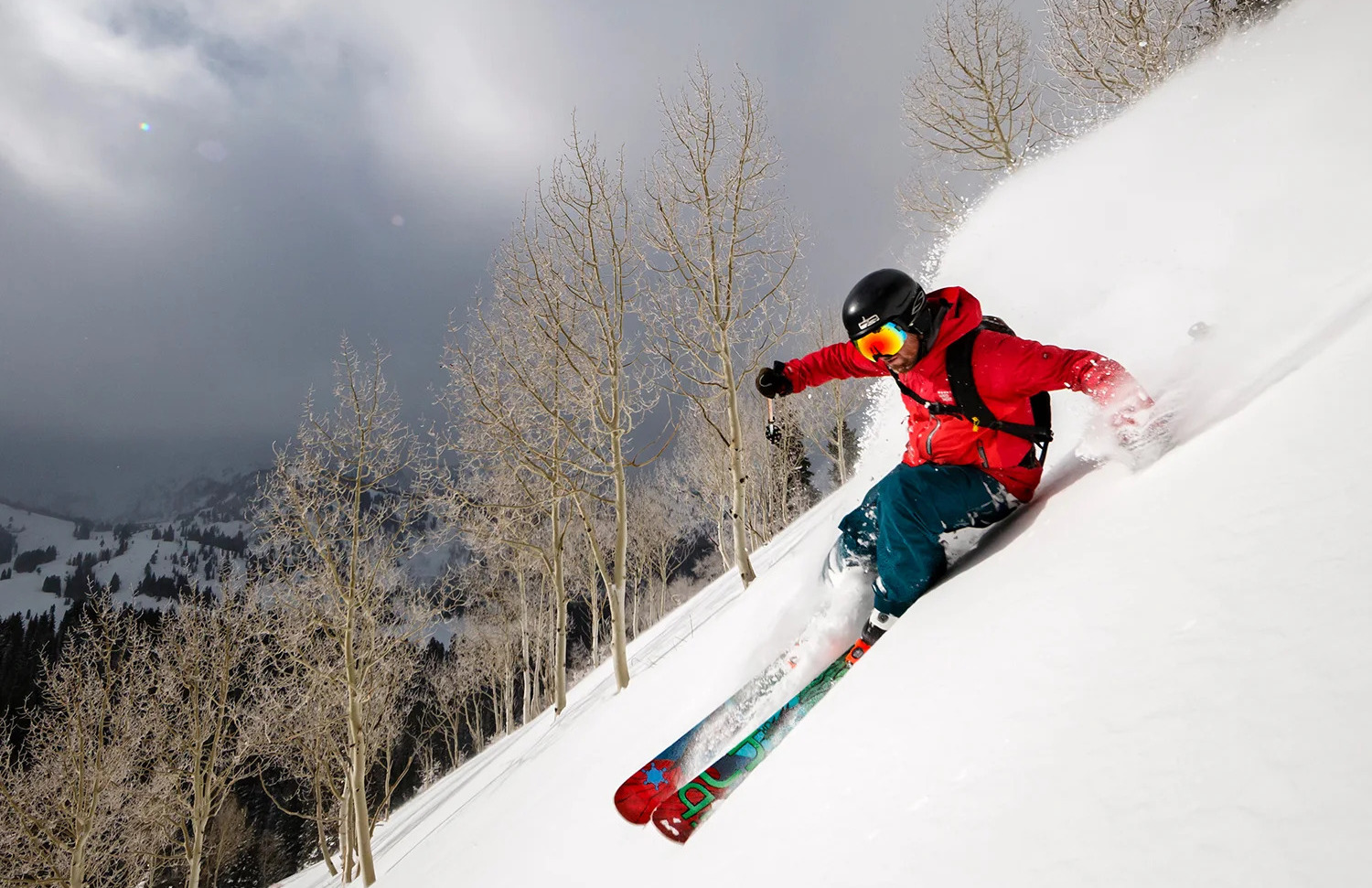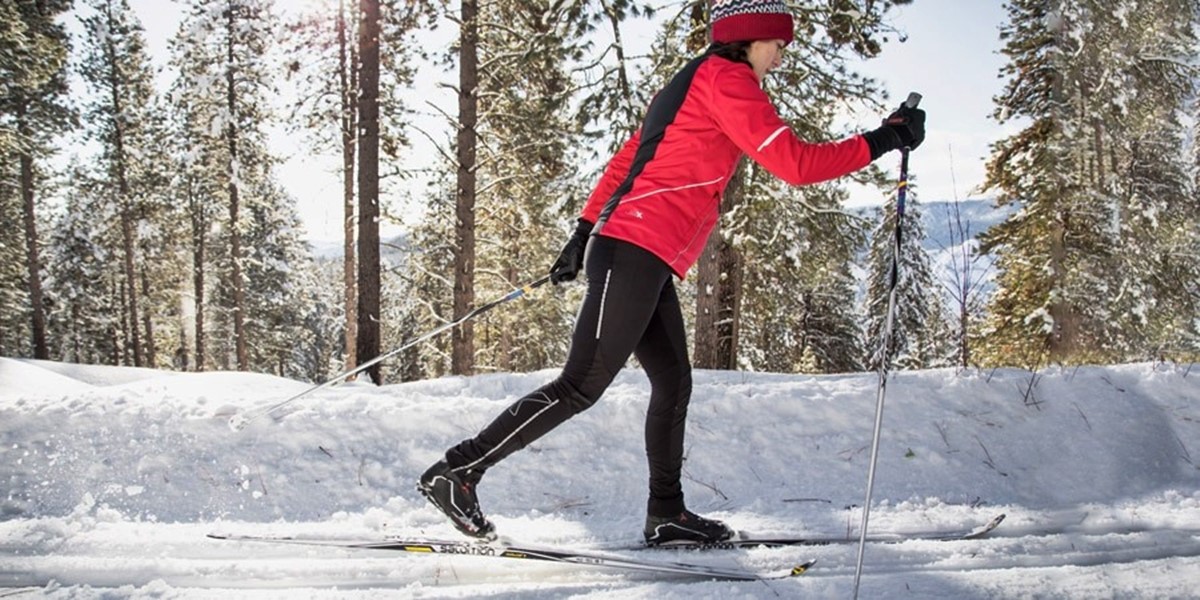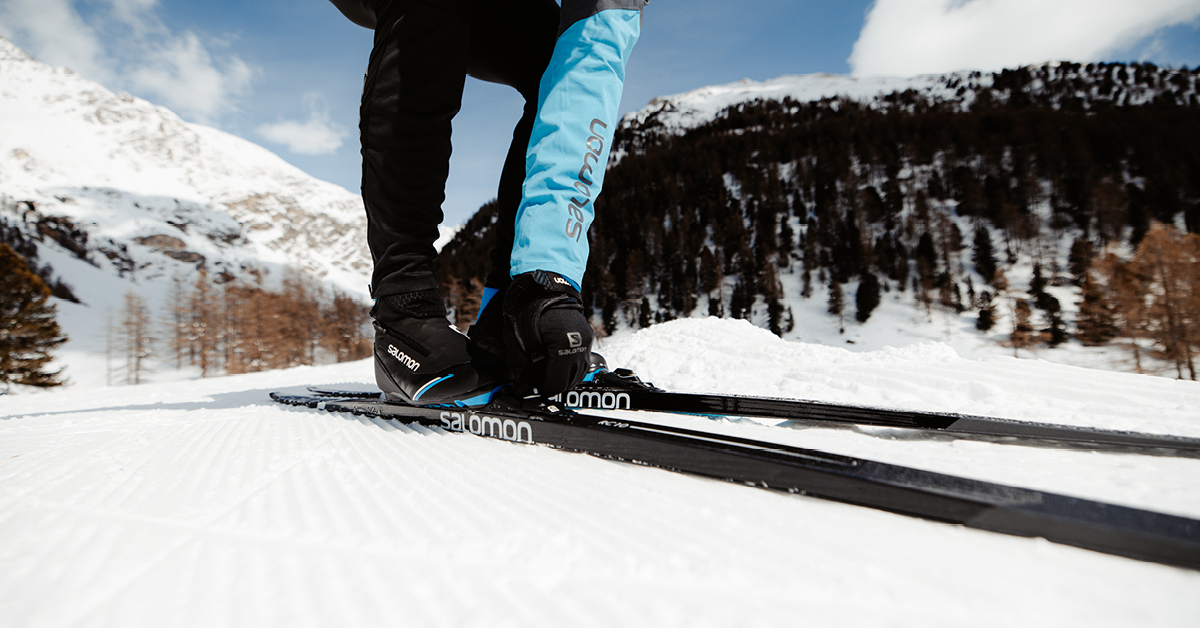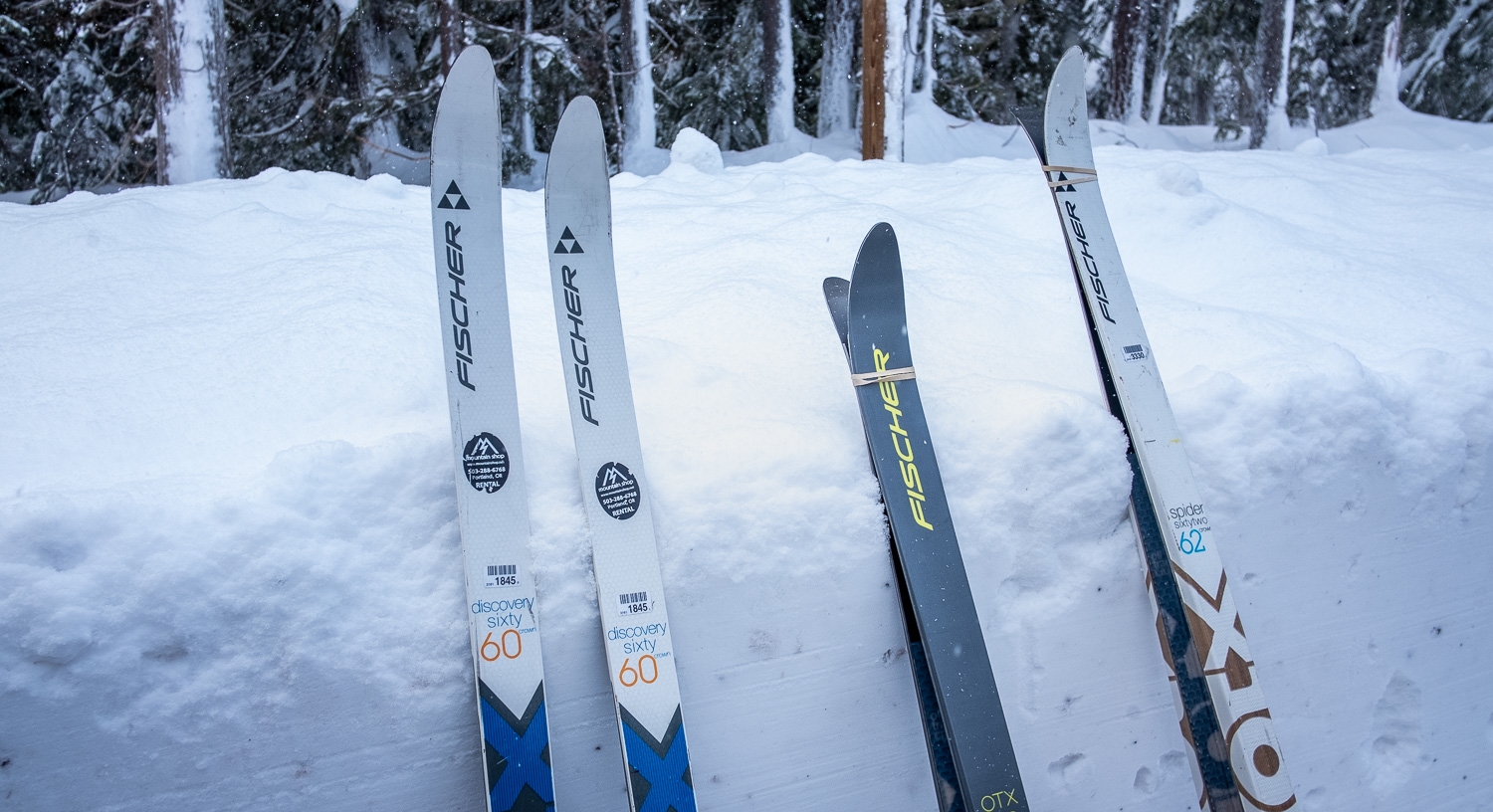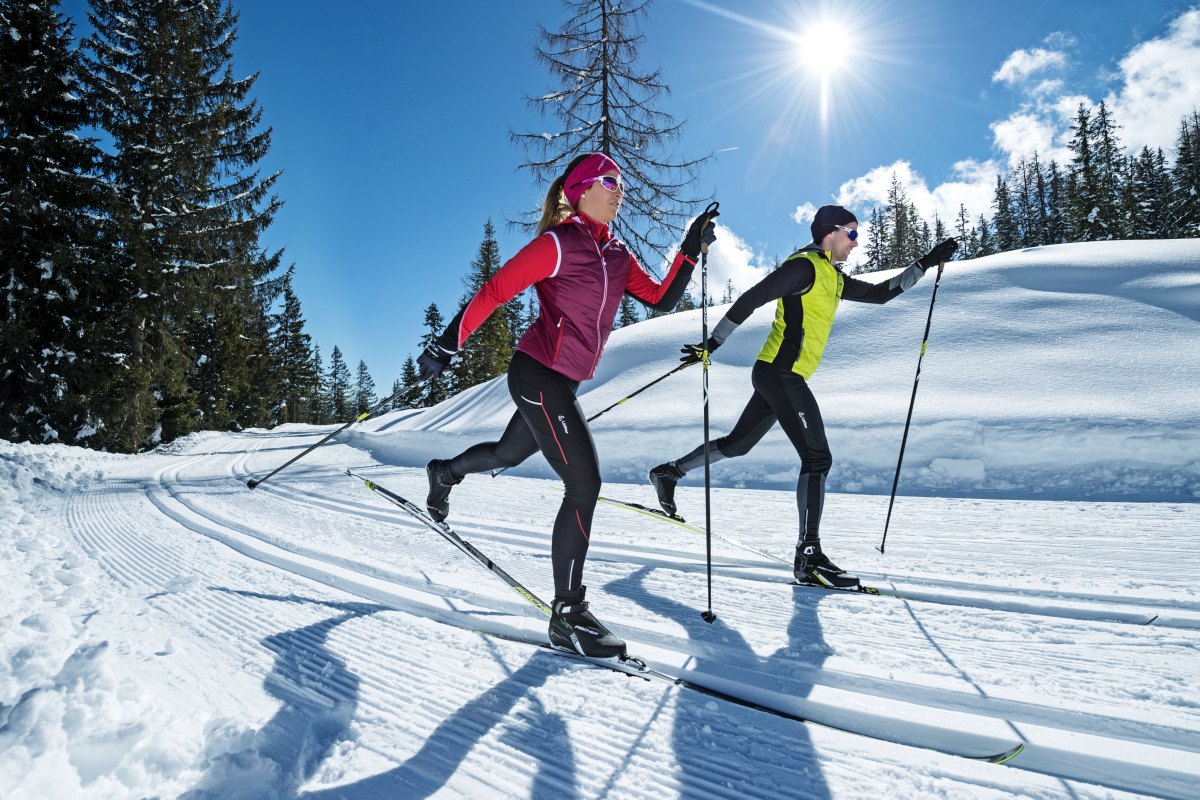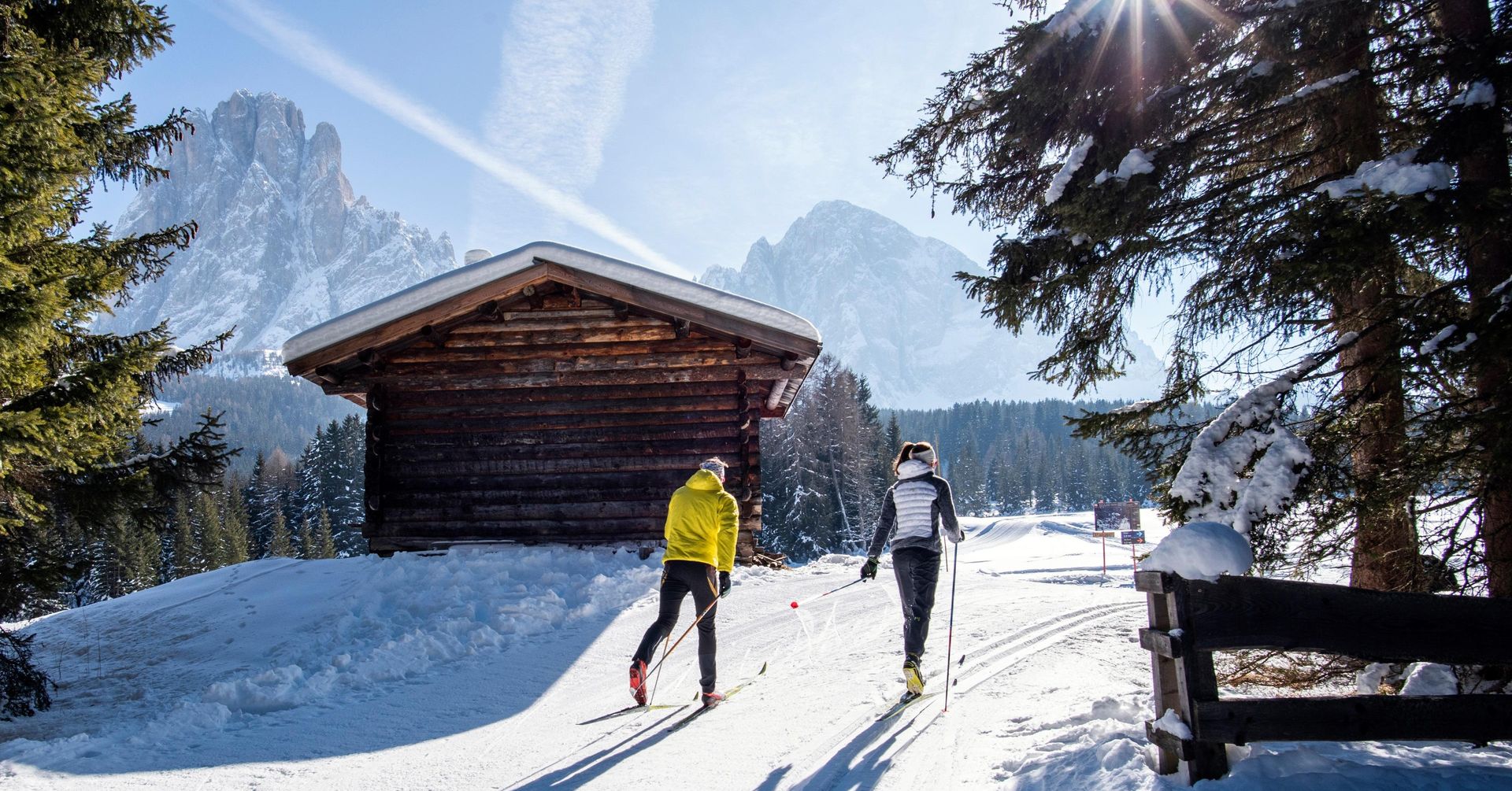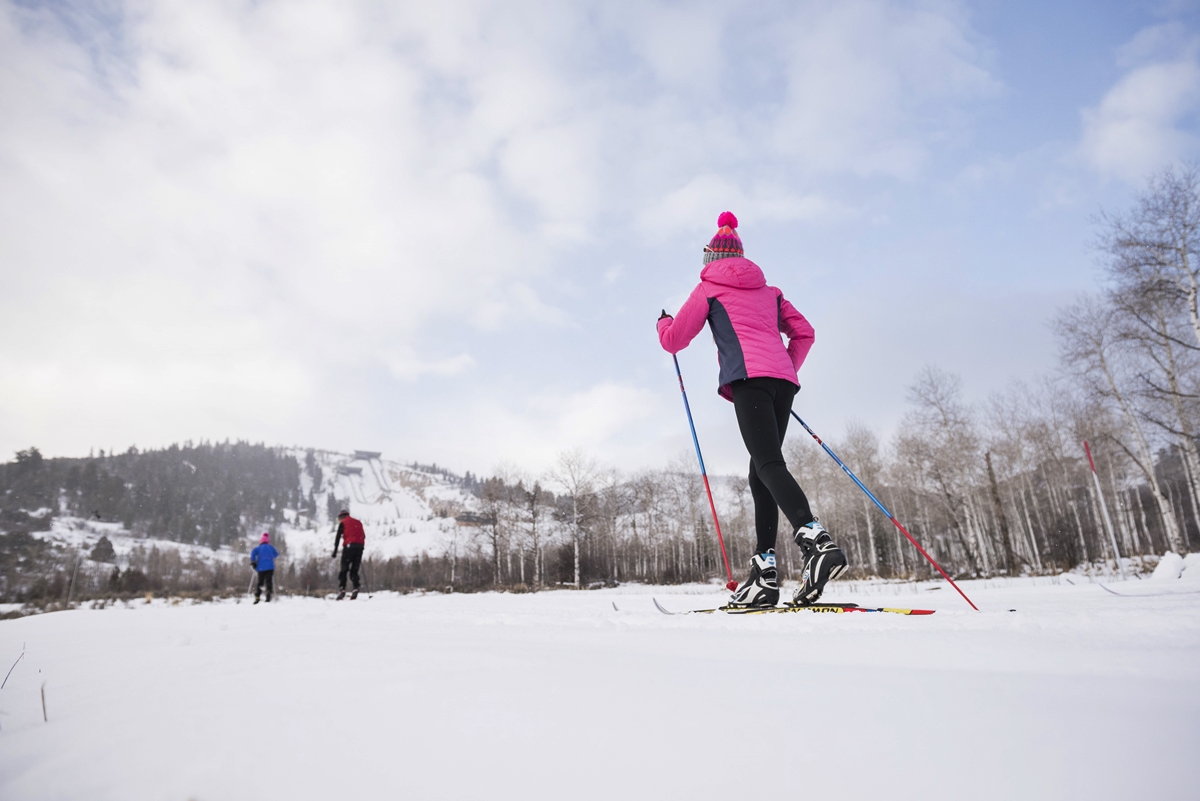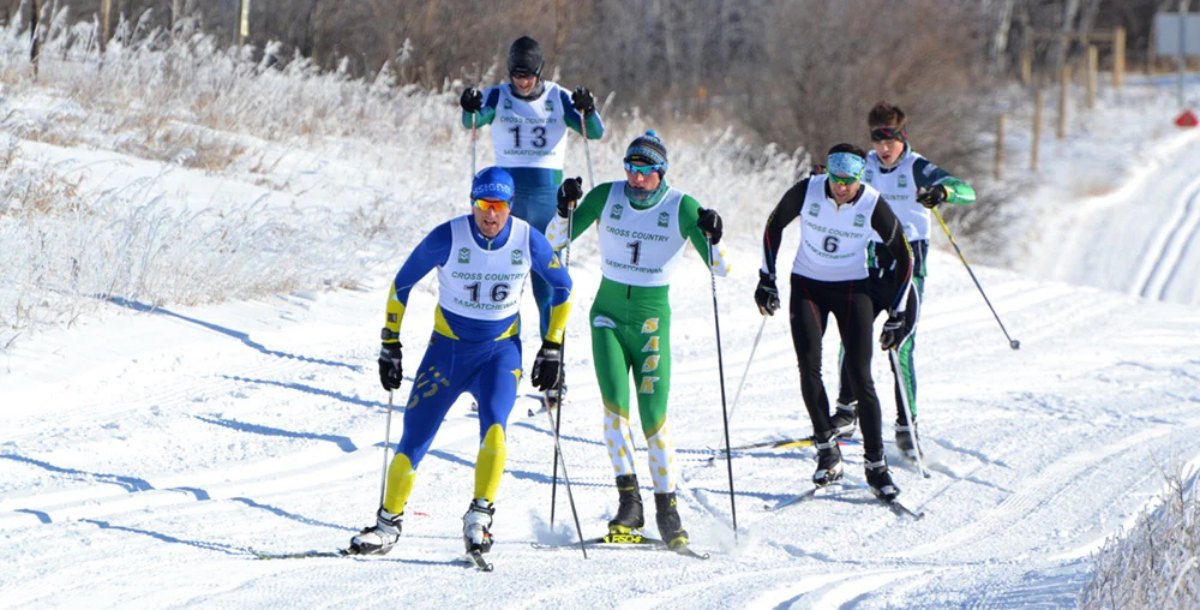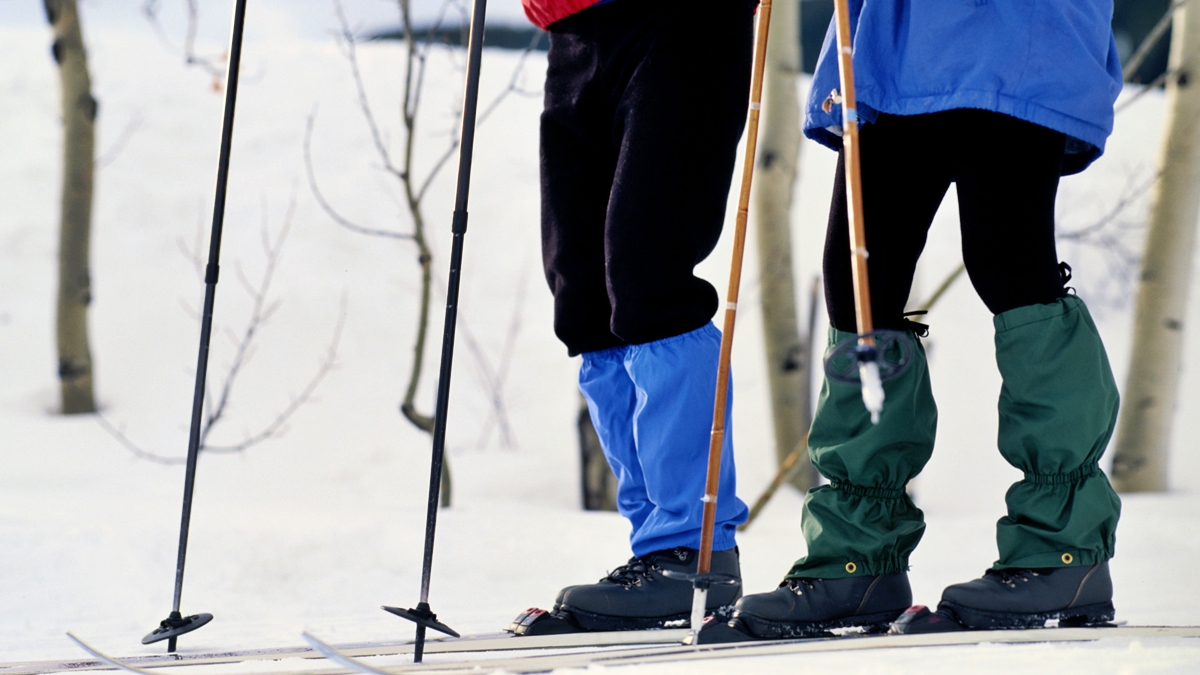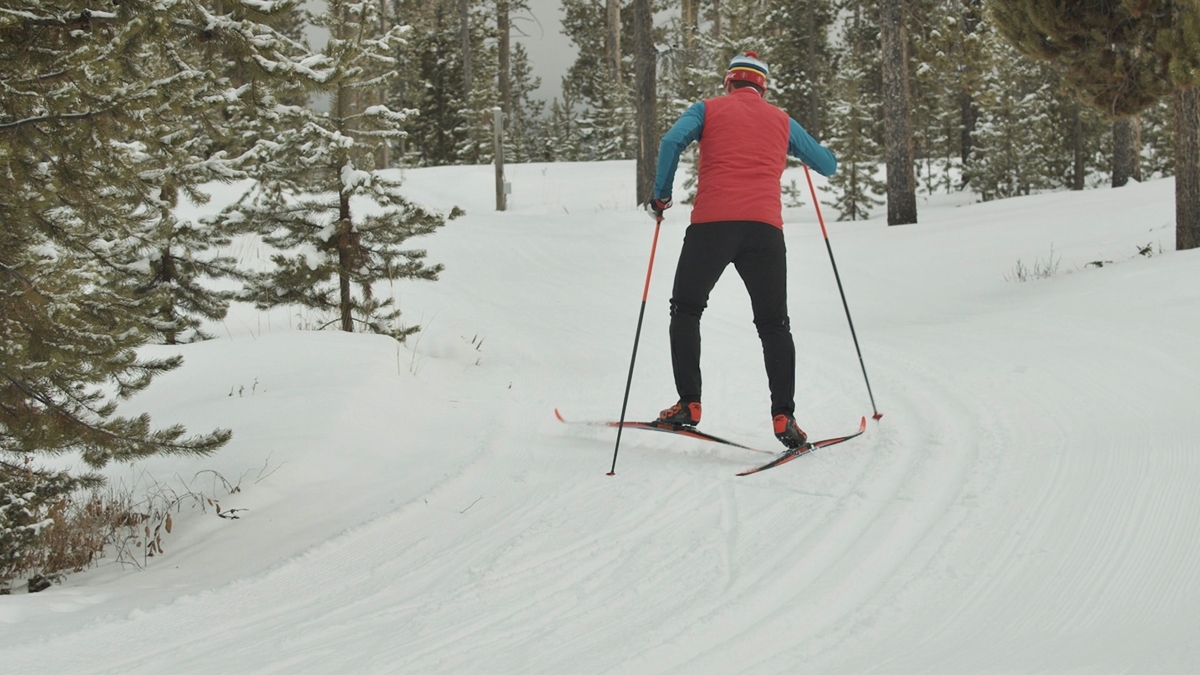Home>Misc>Featured>How Much Snow Do You Need For Cross Country Skiing
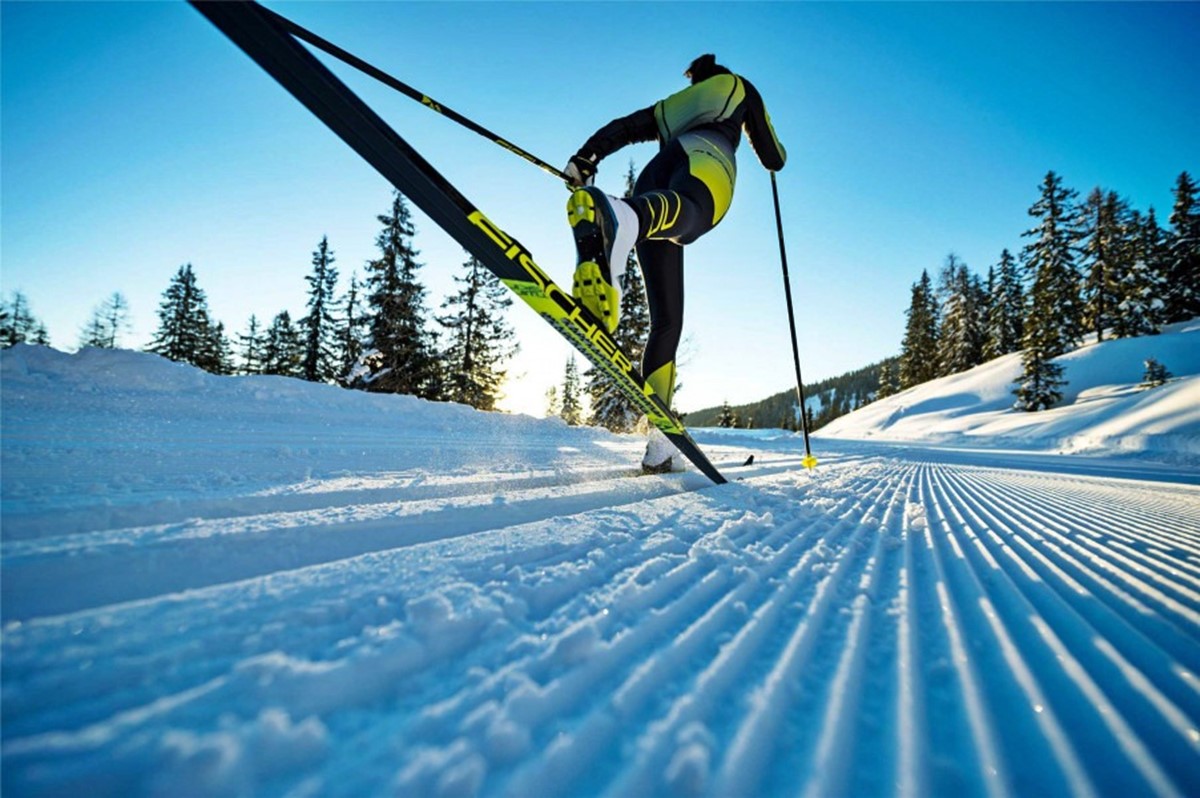

Featured
How Much Snow Do You Need For Cross Country Skiing
Modified: August 18, 2023
Get featured in cross country skiing! Find out how much snow you need for the perfect track and enjoy an incredible winter activity.
Introduction
Welcome to the wonderful world of cross country skiing! If you’re looking for a fun and exhilarating outdoor activity during the winter months, cross country skiing is a fantastic choice. Whether you’re a beginner or an experienced skier, exploring the snowy landscapes on skis is an incredible way to stay active and enjoy the winter wonderland.
Before you hit the trails, it’s important to understand the ideal snow conditions for cross country skiing. The amount of snow and its quality can greatly impact your skiing experience. In this article, we will explore the minimum snow depth required for cross country skiing, factors influencing the required snow depth, the impact of snow quality and type on skiing, and safety considerations in different snow conditions.
Whether you prefer gliding through fresh powder or crusty snow, understanding the snow conditions will help you plan your skiing adventure accordingly. So, let’s dig in and uncover everything you need to know about snow depth for cross country skiing.
Ideal Snow Conditions for Cross Country Skiing
When it comes to cross country skiing, having the right snow conditions can make all the difference in your skiing experience. While the ideal snow conditions may vary depending on your skill level and personal preferences, there are a few general guidelines to keep in mind.
First and foremost, the snow should be packed and firm enough to support your weight and allow for smooth gliding. Too much loose and powdery snow can make it difficult to maintain your balance and gain traction. On the other hand, if the snow is too hard and icy, it can be challenging to control your speed and turns.
An optimal snow condition for cross country skiing is referred to as “groomed” or “track-set” trails. These trails are prepared using grooming machines that compress and flatten the snow, creating a smooth surface with parallel tracks for skiers to follow. Groomed trails offer excellent conditions for both classic cross country skiing and skate skiing.
Another factor to consider is the snow temperature. Cold and dry snow tends to be faster, allowing for quicker gliding and more efficient skiing. However, if the snow is too cold and icy, it can be slippery and more challenging to maneuver. On the other hand, warmer temperatures can cause the snow to become wet and slushy, which can also impede your skiing performance.
Additionally, the snow conditions at different altitudes and geographic regions can vary. Higher elevations usually receive more snowfall and maintain better snow conditions compared to lower elevations. If you have the opportunity to ski in mountainous regions or areas with consistent snow coverage, you are more likely to find ideal conditions for cross country skiing.
Lastly, it’s worth mentioning that weather conditions can also impact the ideal snow conditions. Freshly fallen snow is often desirable as it provides a soft cushion and improved traction. However, heavy and continuous snowfall can make it challenging to navigate the trails and may require extra effort to break through the snow.
Overall, the ideal snow conditions for cross country skiing include well-groomed trails, packed snow with a good balance of firmness and slipperiness, and favorable snow temperatures. By choosing the right snow conditions, you can enhance your skiing experience and enjoy the beauty of winter in a unique and invigorating way.
Minimum Snow Depth for Cross Country Skiing
When it comes to cross country skiing, the minimum snow depth required can vary depending on several factors. While there is no hard and fast rule, a general guideline is that a minimum snow depth of around 4 to 6 inches (10 to 15 cm) is typically considered suitable for cross country skiing.
Why is a minimum snow depth important? The primary reason is to ensure that the ski poles and skis can effectively penetrate and grip the snow. Cross country skiing relies on the propulsion and gliding motion achieved by pushing off and sliding on the snow surface. Insufficient snow depth can make it challenging to get proper traction and glide, which can hinder your skiing experience.
However, it’s worth noting that the required snow depth may vary depending on certain factors. One such factor is the type of skiing technique you plan to use. Classic skiing, where skis move in parallel tracks, generally requires less snow depth compared to skate skiing, which involves a skating motion with a wider stride. Skate skiing requires a slightly deeper snow base for proper maneuverability and stability.
Another consideration is your weight and body mass. Heavier skiers may need a slightly deeper snow base to avoid sinking too deep into the snow and causing drag. Additionally, if you plan to ski off-trail or in ungroomed areas, you may need a thicker snow base to provide the necessary support and stability.
It’s also important to consider the snow’s underlying surface. Skiing on a soft, even surface with a consistent snow depth will generally require less snow compared to skiing on uneven or rocky terrain. In areas with obstacles or vegetation poking through the snow, you’ll want a thicker snow base to avoid potential hazards.
Keep in mind that these guidelines are just a starting point. Local conditions and personal preferences may play a role in determining the minimum snow depth you find suitable for skiing. Some skiers may be comfortable with slightly shallower snow depths, while others may prefer a more substantial snow base for optimal skiing.
Always check local trail reports or consult with experienced skiers in the area to get the most up-to-date information on snow conditions and the recommended minimum snow depth. By understanding the minimum snow depth requirements, you can ensure you have an enjoyable and safe cross country skiing experience.
Factors Affecting the Required Snow Depth
The required snow depth for cross country skiing can be influenced by several factors that can vary from one skiing location to another. These factors can impact skiing conditions and determine the minimum snow depth needed for optimal skiing experiences.
1. Skiing Technique: Different skiing techniques require varying levels of snow depth. Classic skiing, where skis move in parallel tracks, generally requires less snow than skate skiing, which involves a skating motion with a wider stride. Skate skiing typically necessitates a deeper snow base for stability and maneuverability.
2. Skier Weight and Skill Level: The weight and skill level of the skier can affect the required snow depth. Lighter skiers may require less snow depth to achieve proper traction and glide, while heavier skiers may need a deeper snow base to avoid sinking too much into the snow.
3. Trail Surface and Terrain: The underlying trail surface and terrain play a crucial role in determining the necessary snow depth. Skiing on smooth, even surfaces with consistent snow depth requires less snow compared to skiing on rough or rocky terrain. In areas with obstacles or vegetation poking through the snow, a thicker snow base is needed to provide the necessary support and avoid hazards.
4. Snow Conditions and Snow Type: The characteristics of the snow itself can impact the required snow depth. Different types of snow, such as powdery, wet, or compacted snow, can have varying levels of slipperiness and firmness. Softer, powdery snow may require a greater depth to provide sufficient resistance and stability.
5. Temperature and Weather Conditions: Temperature and weather conditions can directly affect the snow quality and, in turn, the required snow depth. Cold temperatures tend to create firmer snow that requires less depth, while warmer temperatures can lead to softer, wetter snow that may necessitate a greater snow base to maintain stability.
6. Grooming and Maintenance: Groomed trails, where the snow is compacted and flattened, generally require less snow depth. Grooming machines create smoother surfaces and tracks, allowing for better skiing conditions. However, ungroomed trails or areas with minimal maintenance may require a deeper snow base for skiers to maneuver comfortably.
7. Local Climate and Location: The local climate and geographical location of the skiing area can impact the required snow depth. Higher elevations and regions with consistent snowfall typically have better skiing conditions and may require a thinner snow base compared to areas with less snow coverage.
While the general guideline for cross country skiing is a minimum snow depth of around 4 to 6 inches, it’s essential to consider these factors to determine the ideal snow depth for your skiing adventure. Always check local trail reports or consult with experienced skiers to get accurate and up-to-date information on the required snow depth in your specific location.
How Snow Quality and Type Impact Cross Country Skiing
The quality and type of snow can significantly impact your cross country skiing experience. Different snow conditions can affect the level of grip and glide, overall stability, and the effort required while skiing. Understanding how snow quality and type influence skiing can help you better prepare and adapt to varying conditions.
1. Snow Quality: The quality of snow refers to its texture, moisture content, and compactness. Powder snow, with its light and fluffy texture, can provide excellent glide, making it ideal for recreational skiing. However, deep powder snow requires more effort to push off and can be challenging to control. Wet, heavy snow, on the other hand, is slower but offers more stability. Crusty or icy snow can make skiing more challenging and require extra care to maintain balance and control.
2. Snow Type: Snow can come in various types, such as fresh snowfall, wind-packed snow, or transformed snow. Freshly fallen snow provides a softer and more forgiving surface, allowing for comfortable and efficient gliding. Wind-packed snow, created by strong winds compacting the snow, can offer better stability but may require more effort for propulsion. Transformed snow refers to snow that has undergone changes due to temperature fluctuations, becoming granular or icy. Transformed snow can make skiing more challenging, as it may have less grip and glide compared to fresh snow.
3. Temperature: Snow temperature also plays a role in skiing performance. Colder temperatures tend to create denser, faster snow that offers better glide. However, extremely cold temperatures can make the snow track icy and less enjoyable. Warmer temperatures can result in softer, slower snow that requires more effort for propulsion but provides increased stability.
4. Snow Depth: The depth of snow can impact the overall skiing experience. Shallow snow can cause the skis to hit the ground or obstacles, making it difficult to maintain control and balance. Deep snow can create a challenge for propulsion and require greater effort to move through. The ideal snow depth will depend on personal preference, skiing technique, and trail conditions.
5. Grooming: Snow that has been groomed, or mechanically compacted and flattened to create tracks, offers smoother skiing conditions. Groomed trails provide consistent surfaces, allowing for optimal glide and control. However, ungroomed or natural snow surfaces may present varying textures and require different skiing techniques to navigate.
Being aware of the impact of snow quality and type can help you select appropriate equipment, adjust your skiing technique, and set realistic expectations for your skiing adventure. It’s always recommended to check local ski reports and trail conditions to ensure you are prepared for the specific snow conditions at your chosen location.
Preparing for Cross Country Skiing in Various Snow Conditions
Cross country skiing is a versatile sport that allows you to enjoy the outdoors in various snow conditions. Whether you are skiing on freshly groomed trails, gliding through deep powder, or navigating icy surfaces, being prepared and equipped for different snow conditions is essential. Here are some tips on how to prepare for cross country skiing in various snow conditions:
1. Check Trail Conditions: Before you hit the slopes, check local trail reports or ski center websites to get up-to-date information on snow conditions, grooming status, and any hazards to be aware of. This will help you plan your skiing route and choose the appropriate equipment.
2. Equipment Selection: Different snow conditions require different types of skis. For groomed or compacted trails, traditional classic skis with grip wax or fish scales are suitable. For deep powder snow, wider and shorter skis known as “backcountry” skis or “off-track” skis are more effective. Additionally, trail conditions may warrant the use of metal-edged skis for improved grip and stability on icy terrain.
3. Adjust Bindings and Poles: Depending on the snow conditions, you may need to adjust the bindings and pole length for optimal performance. In soft and deep snow, raise the bindings to increase clearance and prevent the skis from sinking too much. Longer poles provide better balance and stability in deep snow, while shorter poles enhance maneuverability in packed or icy snow.
4. Technique Adaptation: Different snow conditions require adjustments in skiing technique. In soft and deep powder, use a wider stance and slightly wider strides to maintain balance and prevent sinking. In icy conditions, focus on engaging the edges of the skis and using a tighter grip on the pole to maintain stability. Adapt your technique to match the snow conditions for a smoother and safer skiing experience.
5. Dress Appropriately: Dressing in layers is vital to regulate body temperature during cross country skiing. Wear moisture-wicking base layers, insulating mid-layers, and a windproof and waterproof outer shell. Layering allows you to adjust according to temperature fluctuations and exertion levels. Don’t forget to wear a hat, gloves or mittens, and suitable footwear for warmth and protection.
6. Safety Gear: Carry essential safety gear, such as a map, compass, whistle, and a small first aid kit, regardless of the snow conditions. In remote or backcountry skiing areas, consider carrying avalanche safety equipment and knowing how to use it. Always inform someone of your skiing plans and expected return time.
7. Skill Development: Improving your skiing skills through lessons or practice sessions will help you navigate different snow conditions with confidence. Taking lessons from a certified instructor can teach you specific techniques for each snow condition and enhance your overall skiing ability.
Remember, each snow condition offers a unique skiing experience. Embrace the variety and adaptability of cross country skiing, and enjoy the beauty of nature as you glide through different snow conditions. Stay safe, have fun, and make the most of your cross country skiing adventures.
Safety Considerations in Cross Country Skiing with Different Snow Depths
When engaging in cross country skiing, safety should always be a top priority, especially when dealing with varying snow depths. Different snow conditions can present unique challenges and potential hazards. Here are some safety considerations to keep in mind when skiing with different snow depths:
1. Trail and Terrain Awareness: Be aware of the trail and terrain conditions, especially in areas with varying snow depths. Uneven surfaces, hidden obstacles, or changes in slope can increase the risk of falls and injuries. Stay alert, follow trail markers, and avoid skiing in areas beyond your skill level.
2. Equipment Maintenance: Regularly inspect and maintain your equipment, including skis, bindings, and poles. Ensure proper grip on the skis and functioning bindings to prevent accidents caused by equipment failure. Appropriate gear will help you navigate safely through varying snow depths.
3. Proper Clothing and Protection: Dress appropriately for the weather conditions and ensure adequate protection against the cold. Layer your clothing to regulate body temperature and protect yourself from frostbite or hypothermia. Wear a helmet to prevent head injuries in case of falls, especially on icy snow or uneven terrain.
4. Avalanches and Backcountry Skiing: In areas with deep snow and unstable conditions, avalanches can pose a significant risk. If skiing in backcountry or remote areas, familiarize yourself with avalanche safety techniques, carry appropriate safety gear, and consider consulting with local authorities or experienced guides before venturing out.
5. Communication and Emergency Preparedness: Always inform someone of your skiing plans, including your expected route and return time. Carry a communication device, such as a mobile phone or a two-way radio, to contact help in case of emergencies. It is also wise to carry a basic first aid kit, including supplies for treating minor injuries or providing initial assistance before professional help arrives.
6. Skiing in Icy or Hard-Packed Conditions: In areas with icy or hard-packed snow, the risk of losing control and sliding increases. Use caution and adjust your skiing technique to maintain stability and control. Engage the edges of the skis, take shorter strides, and use poles for balance. Consider using extra measures, such as metal-edged skis or ski crampons, for enhanced grip on icy surfaces.
7. Skiing in Deep Snow: Deep snow can present challenges, especially for beginners or less experienced skiers. Ensure you have sufficient skill and strength to handle deep snow conditions before attempting extensive off-trail or backcountry skiing. Practice proper techniques to prevent exhaustion and be prepared for increased physical demand.
Always remember to assess your abilities and make responsible choices when skiing with different snow depths. Be mindful of your limitations, know when to seek help or take a break, and ski with a buddy whenever possible. By prioritizing safety and being well-prepared, you can enjoy the exhilaration of cross country skiing while minimizing the risks associated with different snow depths.
Conclusion
As cross country skiing enthusiasts, we understand the importance of snow conditions in shaping our skiing experience. Whether it’s the ideal snow depth, the quality of snow, or the type of snow we encounter, these factors play a significant role in determining the enjoyment and safety of cross country skiing.
Having the right snow conditions can greatly enhance your skiing adventure. From perfectly groomed trails to fresh powder or even icy surfaces, each type of snow offers a unique experience and requires specific techniques to navigate successfully. By understanding the factors that affect snow conditions, such as skiing technique, skier weight, terrain, and snow type, you can better prepare and adapt to various snow conditions.
Safety should always be a paramount concern in cross country skiing. By taking the necessary precautions, such as checking trail conditions, maintaining equipment, dressing appropriately, and being aware of potential hazards, you can minimize the risks associated with different snow depths and enjoy a safe and fulfilling skiing experience.
Remember, cross country skiing is not just a physical activity but also an opportunity to connect with nature and appreciate the beauty of the winter landscape. So, whether you’re gliding through freshly groomed trails, braving deep powder, or tackling icy surfaces, embrace the challenges and joys that each snow condition brings.
Lastly, always be sure to check local trail reports, seek advice from experienced skiers, and continue developing your skiing skills to make the most of your cross country skiing adventures. Stay safe, have fun, and cherish the memories you create while skiing in different snow conditions.
